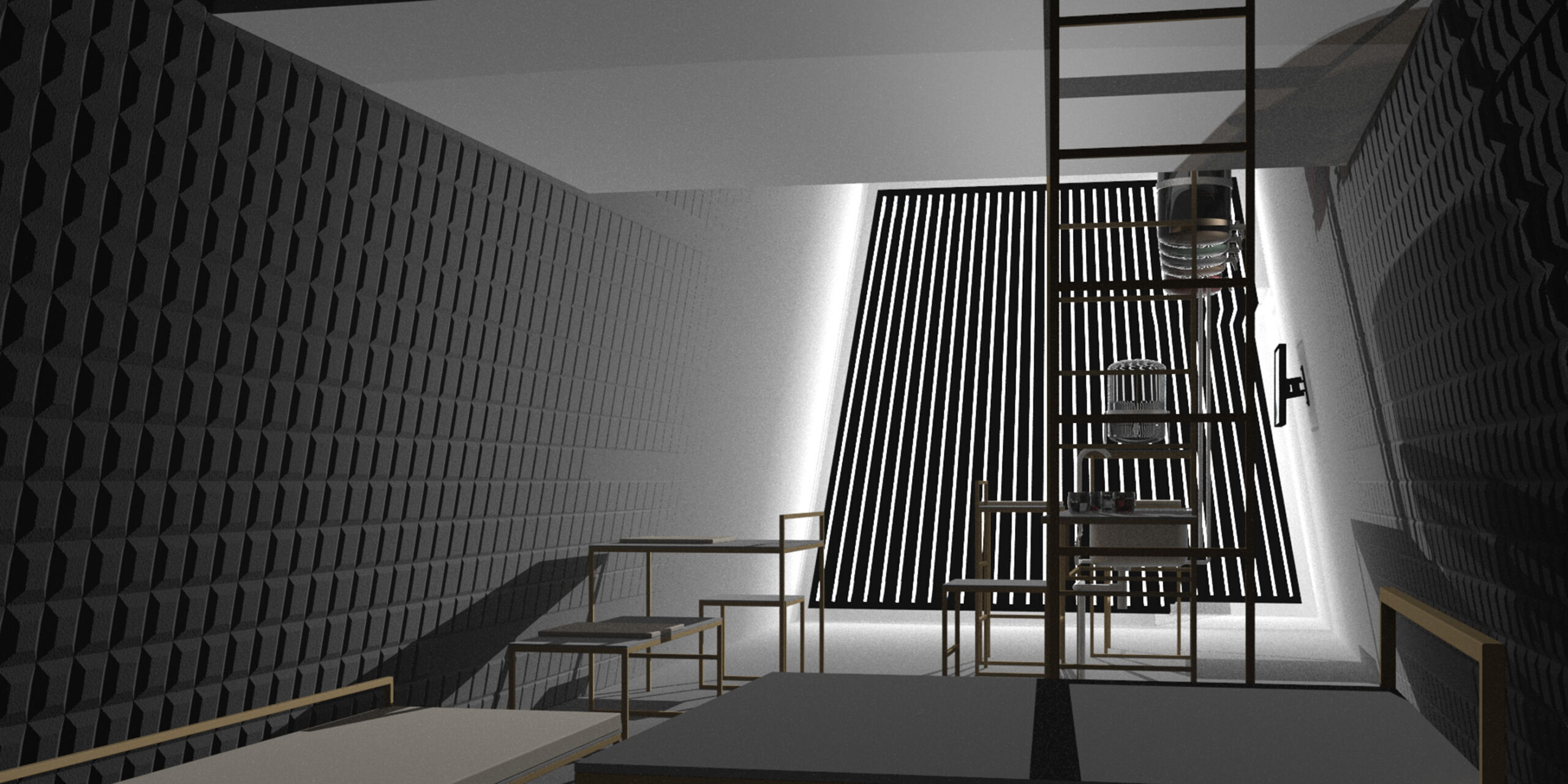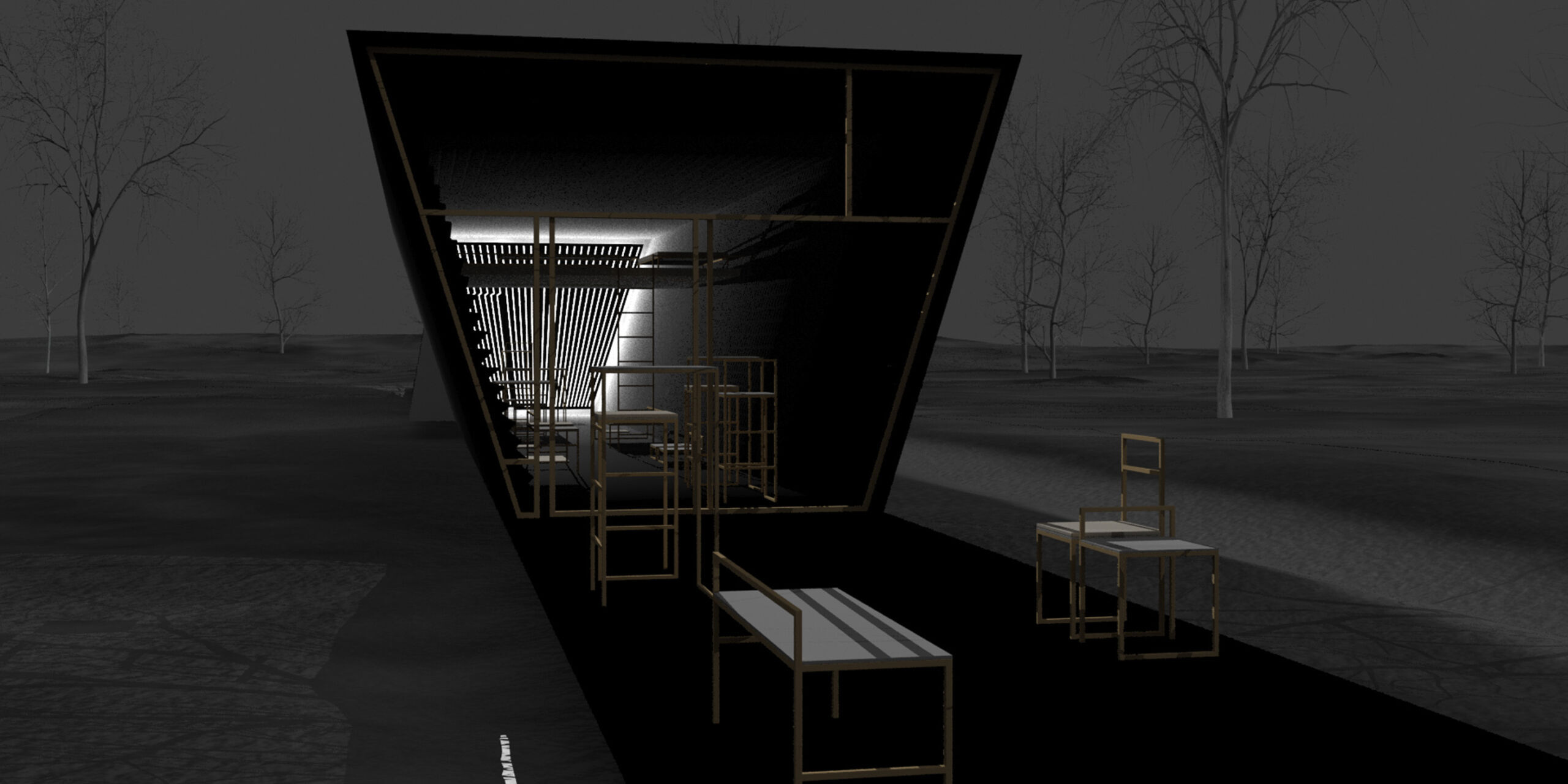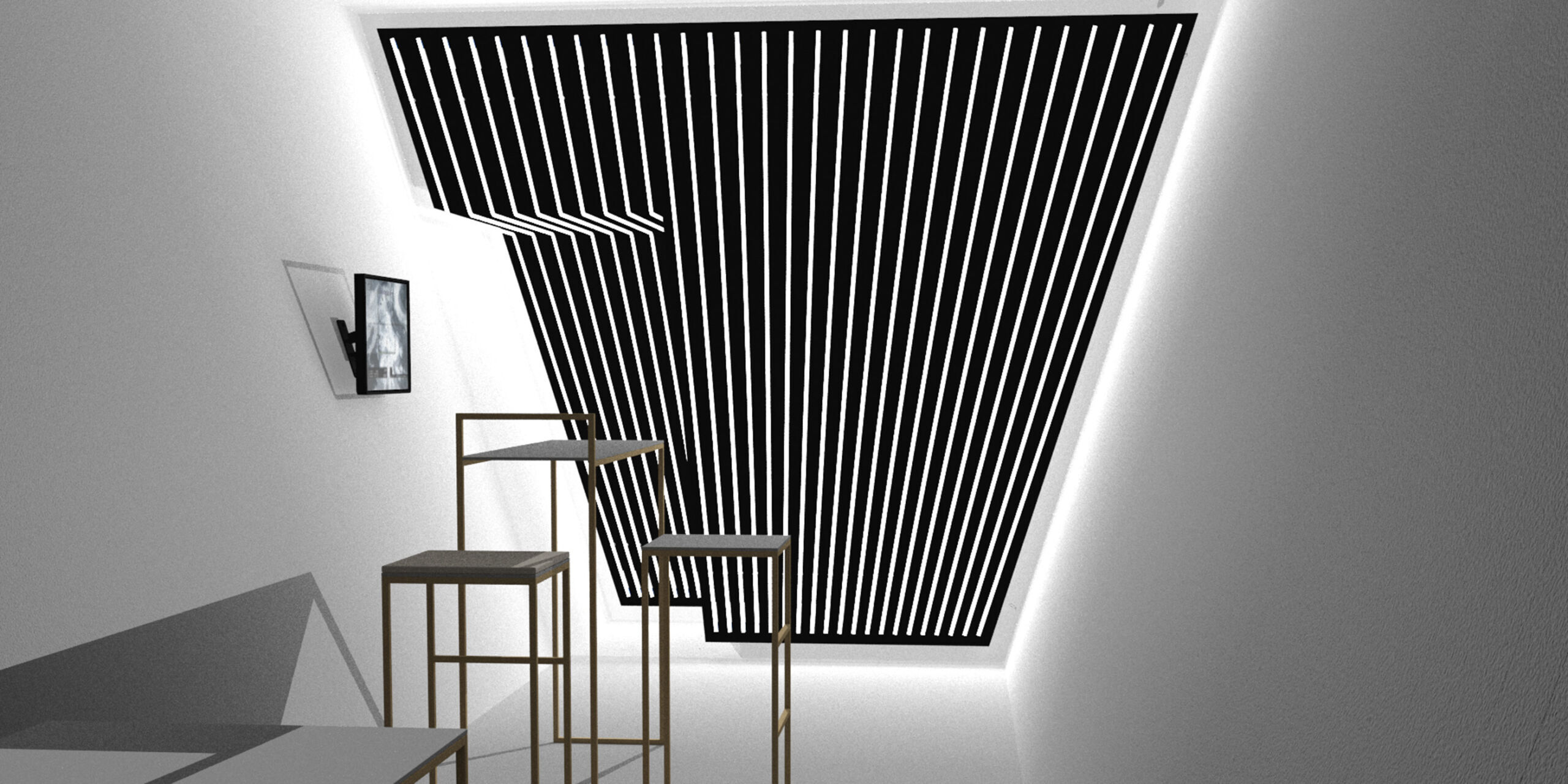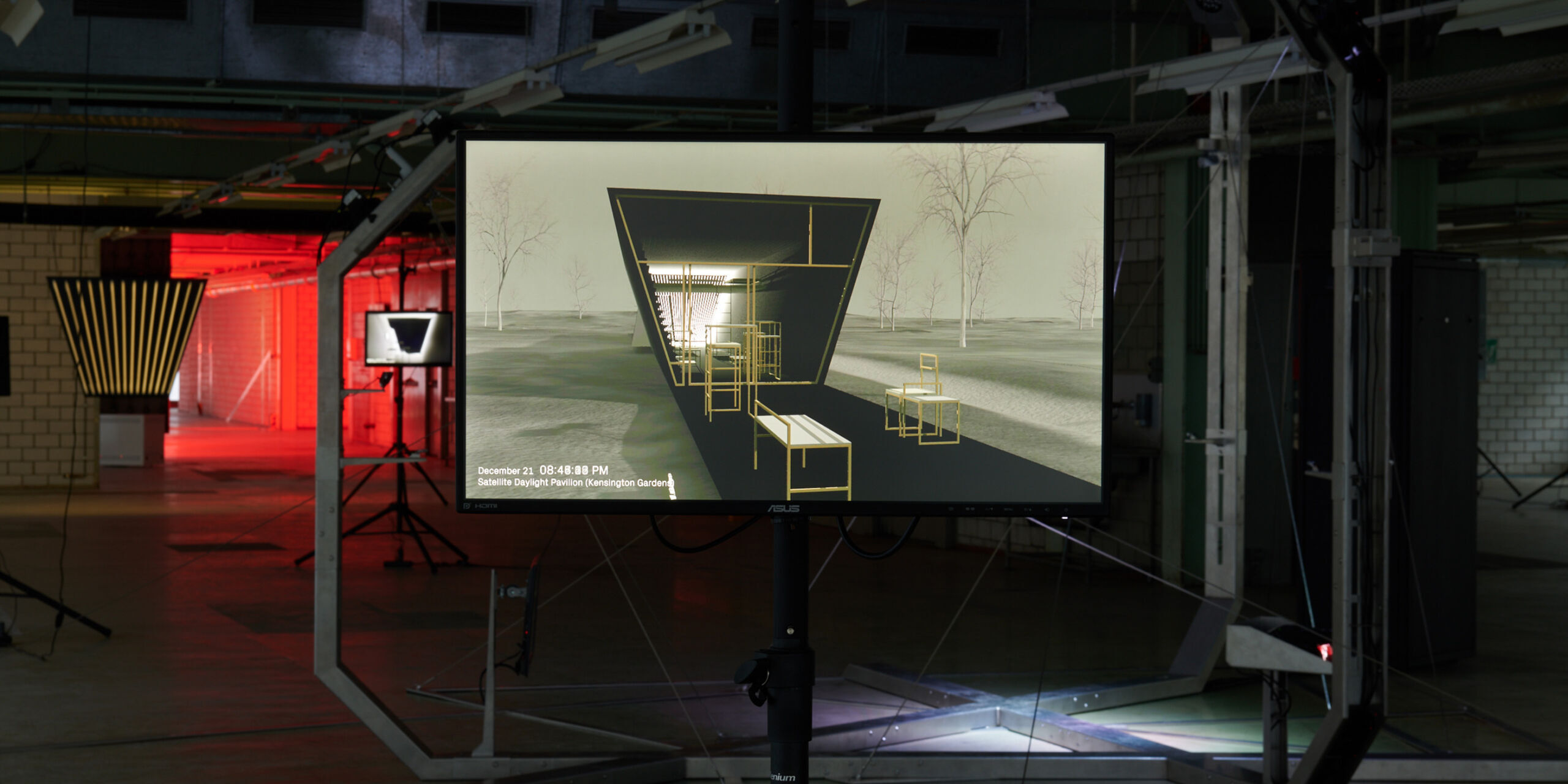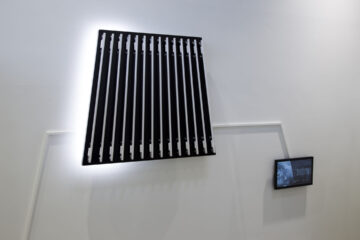fabric | ch
Satellite Daylight Pavilion
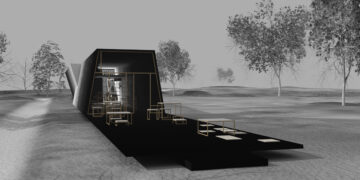
The two-minute video animations of Satellite Daylight Pavilion (2017) by the Lausanne-based studio for architecture, interaction and research fabric | ch encompass four views of a virtual, interactive teahouse designed for Kensington Gardens in London. They show a platform extending on a north-south axis and tapering towards the south carrying two trapezoid rooms pushed into each other; inside, they are furnished with filigree, modular seating and lounging possibilities. The trapezoid of the northern room widens downwards, while the southern trapezoid widens conversely. They form a conjunction between two Satellite Daylight installations, one of the southern and another of the northern hemisphere: London at northern latitude 51°30'N and Hope Bay, a scientific station in Antarctica, at 63°23'S southern latitude. Where the two trapezoids meet, there is a 4 × 4 metre LED-based light display inside on each side, which extends across the entire wall and forms a kind of virtual window to the respective location. As with Satellite Daylight 47°33'N, which was created to follow the latitude of Basel, specially programmed software calculates the incidence of actual light from a satellite perspective in both locations: London and Antarctica.
The four video animations cover different lighting moods throughout the year and at various times of day. The first video begins with the exterior view of the northern pavilion on a 21 March morning between 8:00 and 9:30 am. The second video shows the interior of the London pavilion with a view of the light installation at midday from 12:00 to 12:30 on a 12 June. The third video shows the interior of the southern side in the afternoon from 16:00 to 17:30 on a 21 September afternoon. The last video closes the circle with an exterior view of the southern terrace at midnight from 24:00 to 1:30 on a 21 December. Antipodes of northern and southern hemispheres, virtual and natural light, day and night converge in the work’s architecture. The microcosm of the pavilion allows our relationship to the macrocosm of our planet to become physically tangible and more comprehensible.
(Text: Bettina Back)

